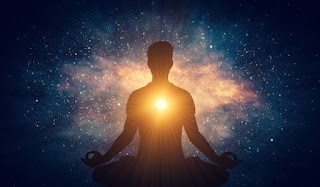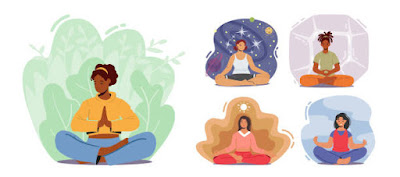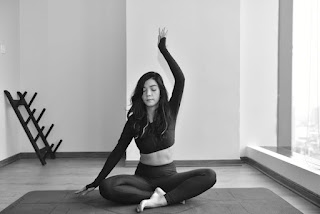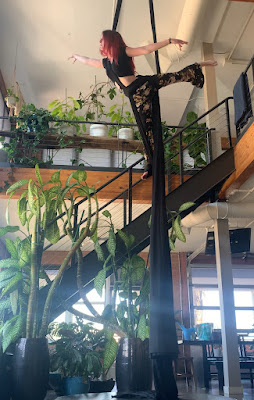Jhana Meditation Insights: Reflection on My Journey and Integration
Reflection on My Jhana Journey: Integrating Meditation Insights
The Culmination of a Life-Changing Journey
It’s hard to fully articulate just how transformative these past 12 weeks of Jhana meditation have been for me. This isn’t a conclusion but a stepping stone to something much larger, an ongoing exploration of the vast possibilities within the human mind. These weeks have been a journey into the deepest layers of concentration and consciousness, a journey that has opened my eyes to the true potential of meditation and what lies beyond the surface of our everyday experiences.
When I began this exploration of Jhanas, I had no idea just how radically it would change my relationship with my mind, my sense of self, and the world around me. What started as an attempt to reach deeper states of absorption in meditation has evolved into a much broader understanding of life’s most profound truths—impermanence, non-attachment, and the fluid nature of identity. But even more than that, the Jhanas have reshaped how I interact with people, how I handle challenges, and how I see my place in this world.
In this reflection, I want to take you through my experience of each Jhana, what it revealed to me, and, more importantly, how those insights have transformed my day-to-day existence. For those of you who are on your own spiritual journey or exploring meditation for the first time, I hope this reflection provides inspiration and practical insight that you can use in your practice and your life.
The Role of the Meditation Object in Jhana Practice
One of the foundational elements in Jhana practice is selecting and sustaining focus on a meditation object. This object, often the breath, serves as the anchor that helps develop deep concentration. By continuously bringing the mind back to this meditation object, practitioners gradually quiet the mental chatter and create the conditions necessary for absorption. In the early stages, distractions may arise frequently, but the key is persistent, gentle redirection.
In contrast to insight meditation, where the focus may shift to observing impermanence, suffering, and non-self, Jhana practice emphasizes unwavering concentration on a single object. This disciplined focus builds the jhana factors needed to enter absorption states: initial and sustained thought, joy, bliss, and one-pointedness. These factors are essential for stabilizing the mind and transitioning smoothly into the deeper Jhanas.
Preparing the Mind: Access Concentration
Before entering the Jhanas, developing access concentration is crucial. This preparatory phase involves cultivating a stable, concentrated mind that is almost free from distractions but not yet fully absorbed in Jhana. Access concentration is marked by a significant reduction in wandering thoughts, and the five hindrances—sensual desire, ill-will, sloth and torpor, restlessness, and doubt—begin to fade.
Achieving access concentration sets the stage for experiencing the first Jhana, where the jhana factors take hold, and the mind becomes fully absorbed in bliss and joy. As practitioners advance through the Jhanas, each subsequent state refines these factors, leading to even deeper levels of concentration and calm.
Exploring Deep Concentration and Mental States in the Jhanas
The practice of Jhana meditation is characterized by achieving deep concentration that transforms our usual mental states. In the first Jhana, initial and sustained thought are present, along with an intense sense of joy and bliss. As concentration deepens, these thoughts subside, giving way to more refined experiences in the second Jhana, where mental tranquility and one-pointedness become more pronounced.
Progressing to the fourth Jhana, the mind reaches an extraordinary level of equanimity and balance. All sensations of pleasure and pain dissolve, replaced by profound steadiness and an undisturbed awareness. It is in these higher Jhanas that the groundwork is laid for transitioning into the formless Jhanas, where the practitioner explores realms beyond physical sensation, such as Infinite Space and Infinite Consciousness. These formless Jhanas offer a glimpse into the vast potential of the human mind and its capacity for boundless awareness.
The Foundation: Bliss and Joy in the First and Second Jhanas
The first two Jhanas are often described as gateways into deeper states of meditation, but they are so much more than that. When I first reached the first Jhana, I was struck by the sheer intensity of joy and bliss that surged through me. The world around me seemed to fade away, replaced by an overwhelming sense of happiness that I had never experienced before. It was as if, for the first time in my life, I had found a place of true contentment that wasn’t tied to anything external—no material possessions, no personal achievements, just pure, unadulterated joy.
This state, known as piti, isn’t just fleeting pleasure. It’s a deeper, more profound kind of joy that feels like it comes from the core of your being. I had read about this state before, but experiencing it firsthand was nothing short of revelatory. For a long time, I had associated happiness with achieving things—reaching goals, being successful in my work, or having fulfilling relationships. But in the first Jhana, I realized that joy doesn’t have to be tied to external circumstances. It can be cultivated from within, and when it arises from this deep place, it is far more stable and lasting.
However, as euphoric as this state was, I quickly learned that clinging to it was a mistake. When I first experienced the bliss of the first Jhana, I wanted to stay there forever. It felt so good, and I thought, “This is it. This is what I’ve been searching for.” But the moment I started to grasp at it, trying to hold onto the feeling, it slipped away. This was my first lesson in the nature of non-attachment: joy, no matter how deep, is still impermanent.
The second Jhana, which deepens the experience of joy while quieting the mind even further, introduced me to a more refined form of happiness—one that wasn’t just about the intensity of bliss but about serenity and focus. In this state, the mental chatter quieted down even more, and the sense of joy became more subtle, more peaceful. It was no longer an overwhelming surge of euphoria but a calm, steady contentment that I could rest in.
Integration into Daily Life:
These early experiences in the Jhanas taught me a valuable lesson that I’ve carried with me into everyday life: joy doesn’t need to be chased or grasped. It arises naturally when we cultivate the right conditions, whether in meditation or in life. And it doesn’t have to be fleeting. Once I stopped chasing bliss and allowed myself to simply be present with whatever arose in meditation, I found that the joy I had experienced began to spill over into my daily life. I found myself feeling more content in small moments—while cooking, walking the dog, or even in difficult conversations.
For readers: Start by cultivating joy in the present moment, wherever you are. Whether in your meditation practice or daily life, focus on being fully present, and you’ll find that joy arises naturally when you let go of the need for it.
Equanimity and Stability in the Third and Fourth Jhanas
If the first and second Jhanas were about joy, the third and fourth were about something deeper: equanimity. As the intensity of joy began to settle, I found myself entering a state of deep peace in the third Jhana. There was still a sense of contentment, but it was quieter, more stable. I wasn’t overwhelmed by pleasure anymore—rather, I felt balanced, unshakable. This is the hallmark of equanimity, a state where neither pleasure nor pain can disturb the mind.
Equanimity has been, perhaps, the most important lesson of the Jhanas for me. In the third Jhana, I learned what it meant to remain steady in the face of both positive and negative experiences. I had moments in meditation where memories, thoughts, or sensations would arise—some of them pleasant, others not. But for the first time, I was able to observe them without getting swept up in them. Whether it was a pleasant memory or an uncomfortable thought, I could watch it arise and pass away without reacting.
This ability to remain undisturbed continued to deepen in the fourth Jhana, where equanimity reaches its most profound expression. Here, even the subtle traces of joy began to fade, leaving only an all-encompassing sense of peace. In this state, there was no clinging to pleasure, no aversion to pain. Everything just was, and that was enough.
Integration into Daily Life:
The equanimity I cultivated in the third and fourth Jhanas has been life-changing. Before practicing Jhana meditation, I often found myself reacting to everything around me—getting upset when things didn’t go my way, chasing after experiences I thought would bring me happiness, avoiding situations that made me uncomfortable. But now, I find that I can move through life with much more ease and stability. Whether I’m faced with a difficult situation or a joyful moment, I can remain grounded, knowing that both will pass.
For readers: Equanimity doesn’t mean you stop caring or feeling emotions. It means that you stop being tossed around by them. Practice observing your thoughts and feelings without getting caught up in them. You’ll find that you can handle challenges with more grace and respond to life’s ups and downs with greater calm.
Boundless Awareness: Infinite Space and Infinite Consciousness
The shift from the fourth Jhana into the formless Jhanas was unlike anything I had experienced before. The first of the formless Jhanas—Infinite Space—was a direct confrontation with the limits of my perception. In this state, I felt my sense of self dissolve into the vastness of space itself. It was as though my consciousness expanded outward, beyond the boundaries of my body and mind, until it encompassed the entire universe. There was no longer any sense of “me” in the traditional sense—just awareness, stretching infinitely in all directions.
This experience was humbling, to say the least. It challenged every assumption I had about who I was. Before this, I had always thought of myself as a separate entity, existing independently of the world around me. But in Infinite Space, I realized that the boundaries I had drawn between myself and the world were illusions. My awareness wasn’t confined to my body—it was part of something much larger, something boundless.
If Infinite Space was about dissolving the boundaries of the self, the next Jhana—Infinite Consciousness—was about recognizing the vastness of awareness itself. In this state, I became acutely aware that consciousness is not something contained within me. It is infinite, unbounded. There was no object to focus on, no sense of separation. Consciousness simply was, and it was everywhere.
Integration into Daily Life:
These formless Jhanas taught me that our perception of self is limited. We often think of ourselves as isolated individuals, but in truth, we are deeply connected to the world around us. This realization has had a profound impact on how I relate to others. I no longer see myself as separate from the people I interact with. Instead, I feel a deep sense of interconnectedness, a recognition that we are all part of the same boundless awareness.
For readers: Take time to reflect on the boundaries you’ve created between yourself and the world. In meditation, try to expand your awareness beyond your body, beyond your mind. Let go of the need to define yourself and see what arises when you tap into a sense of infinite space and consciousness.
Insight Meditation vs. Jhana Practice: A Comparative Look
While Jhana meditation focuses on achieving deep concentration and states of absorption, insight meditation(Vipassana) emphasizes the development of wisdom through observing the impermanent and non-self nature of phenomena. In Jhana practice, the meditator remains fixed on a single meditation object, whereas in insight meditation, awareness moves fluidly to observe whatever arises, fostering an understanding of the Three Marks of Existence.
Both practices complement each other and can be integrated over time. The stability gained from Jhana practice can enhance the clarity and insight of Vipassana, allowing practitioners to observe their mental states with a deeper sense of calm and presence. However, the ultimate goal of insight meditation is to cultivate a direct understanding of reality, while Jhana meditation provides a refined, concentrated foundation to support that insight.
The Profound Emptiness of Nothingness
Moving beyond Infinite Space and Infinite Consciousness, I found myself entering what is perhaps the most enigmatic and profound of all the Jhanas: Nothingness. This seventh Jhana isn’t just a continuation of the formless realms—it’s a complete departure from anything the mind is used to holding onto. In Infinite Space and Consciousness, there was still some subtle awareness of vastness, a sense of being absorbed in something expansive. But in Nothingness, even this drops away.
The first time I entered this state, it was disorienting. There was no sense of space, no object to focus on, no self, no boundaries—just an overwhelming sense of absence. It was not an absence that felt negative or empty in the traditional sense, but more of a profound simplicity, as if everything had been stripped away. What remained was a calm, peaceful void. The mind didn’t grasp for anything because there was nothing to grasp. It was the purest form of letting go I had ever experienced.
This Jhana forced me to confront my deep-seated attachments to form, identity, and even the subtle sense of awareness I had cultivated in previous Jhanas. I realized how much I had been relying on some object of meditation, some experience, to anchor my mind. In Nothingness, there was nothing to anchor to—only the vast, quiet emptiness.
What stood out most to me during this phase of the journey was how peaceful Nothingness felt once I surrendered to it. Initially, I resisted the idea of “nothing” because it felt like losing something, like I was stepping into a void where I might disappear. But once I let go of the fear and allowed myself to fully rest in that state, I realized that Nothingness wasn’t a void in the negative sense—it was a space of pure freedom. There was no striving, no need to control, no attachment to any outcome.
Integration into Daily Life:
This experience taught me an invaluable lesson: freedom doesn’t come from acquiring or holding onto things, whether they be material possessions, relationships, or even spiritual experiences. True freedom comes from letting go of everything—particularly the need to constantly define ourselves or control our environment. Since embracing this understanding, I’ve found myself far less attached to the need for validation or success. I’m able to move through life with a much greater sense of ease, knowing that the things I used to cling to for my sense of identity are, ultimately, impermanent.
For readers: The fear of nothingness can prevent us from experiencing true freedom. But it’s in letting go of everything—even our need for identity—that we find peace. In meditation, practice letting go of your thoughts, your ideas about who you are, and simply rest in the quiet void. You’ll find that nothingness is not something to fear but something to embrace as a gateway to freedom.
Neither Perception nor Non-Perception: The Threshold of Complete Cessation
If Nothingness was profound, the eighth and final Jhana, Neither Perception nor Non-Perception, took me to the very edge of awareness itself. This state is so subtle that it’s difficult to describe. It is neither fully aware nor fully unaware. It exists on the threshold of complete cessation—where perception is so fine that it becomes almost imperceptible.
Entering this Jhana felt like walking a tightrope between being and non-being. It was as if I was balanced on the very edge of consciousness, where any grasping would pull me back into a more defined state of awareness, but surrendering too fully would tip me into unconsciousness. The mind, in this state, is so still, so quiet, that there is barely a ripple of thought or sensation. Time itself seems to disappear, and there is only the most subtle thread of awareness left.
What this state taught me was the impermanence of perception itself. Even the act of perceiving—something we usually take for granted as an inherent part of being alive—began to feel tenuous, almost like a dream. I realized that perception, like everything else, arises and passes away. In the earlier Jhanas, I had learned to let go of objects, sensations, and even self-identification. But here, I was letting go of the very foundation of experience: perception itself.
Integration into Daily Life:
This experience has given me a profound understanding of the nature of reality. So much of what we consider “real” is based on our perceptions, yet those perceptions are inherently unstable and impermanent. By stepping into the space between perception and non-perception, I learned to question the solidity of my experiences and to see life as more fluid and flexible. This has allowed me to navigate complex situations with greater ease, understanding that much of what we react to is merely a fleeting perception, not an ultimate truth.
For readers: Begin to question your own perceptions. How much of your reality is based on what you perceive, and how stable are those perceptions? In meditation, practice observing your thoughts and perceptions without getting attached to them. You’ll begin to see that what you once thought was solid is actually more flexible, more fluid than you realized.
Practical Integration: How the Jhanas Have Reshaped My Life
The profound insights I’ve gained through Jhana meditation have not remained confined to the meditation cushion. They have seeped into every aspect of my life, reshaping the way I interact with the world, with myself, and with others. The journey through the Jhanas has taught me the art of letting go, the beauty of equanimity, and the vastness of consciousness, but most importantly, it has taught me how to live more fully and mindfully in each moment.
From Meditation to Action:
In the past, I often felt the need to control situations, to steer outcomes in a direction that benefited me. I was attached to success, to recognition, and to the idea of progress. But as I’ve journeyed through the Jhanas, I’ve learned that true progress isn’t about outward achievements—it’s about inner transformation. Letting go of control, trusting the natural flow of life, and staying present in each moment has allowed me to act from a place of calm clarity rather than from a need to manipulate or grasp.
One of the most significant changes I’ve noticed is in how I approach relationships. The equanimity I developed in the Jhanas has helped me become a better listener, more compassionate, and less reactive. I no longer feel the need to prove myself or defend my ego in conversations. Instead, I approach interactions with curiosity and openness, recognizing that the people I engage with are part of the same vast consciousness that I’ve experienced in meditation.
Living with Mindfulness and Compassion:
Through the insights gained from the Jhanas, I’ve learned to live with greater mindfulness and compassion. The ability to remain present, to observe without reacting, and to let go of attachments has made me more compassionate—not just towards others, but towards myself as well. I no longer judge myself harshly for mistakes or setbacks. Instead, I view them as part of the natural flow of life, knowing that nothing is permanent and everything is an opportunity for growth.
Lesson for Readers:
I encourage readers to think about how their meditation practice can become more than just a quiet time. The true benefit of meditation is not found in the time spent sitting but in how that time shapes the rest of your life. Take the lessons of equanimity, non-attachment, and presence and apply them to your daily interactions. Whether you’re facing a challenge at work, navigating a difficult relationship, or simply trying to make it through a busy day, remember the peace and clarity you’ve found in meditation and let it guide your actions.
A Path Forward: Continuing the Jhana Journey
One of the most profound realizations I’ve had on this journey is that it never truly ends. Even after reaching the eighth Jhana, there is still more to explore, more to uncover. The path of meditation is infinite, just like the consciousness I’ve experienced in the higher Jhanas. There is always room for deeper understanding, for further letting go, and for more profound insights.
The Journey Never Ends:
Even though I’ve reached a level of depth in meditation that I never imagined possible, I know that this is just the beginning. The Jhanas are not an end goal but a continuous path of deepening wisdom and insight. Each time I sit to meditate, I bring with me the lessons of the past but remain open to whatever new experiences may arise. This openness is key—it’s what keeps the journey alive and evolving.
Staying Grounded:
One of the challenges of reaching the higher states of meditation is staying grounded in the everyday world. The insights gained in the Jhanas are so profound that it can sometimes feel difficult to return to the mundane tasks of life. But this, too, is part of the journey. The real challenge is to bring the wisdom of the Jhanas into the world, to live with presence, equanimity, and compassion in every interaction, every decision.
Encouragement for Readers:
For those reading, I encourage you to stay committed to your practice, no matter where you are on your journey. Whether you’re just beginning to explore meditation or are well along the path, remember that each moment spent in stillness brings you closer to understanding yourself and the world around you. Stay patient, stay open, and trust that the journey itself is the destination.
The Impact of Jhanas on a Spiritual Life
Reflecting on this 12-week journey, I am filled with gratitude for the profound insights that Jhana meditation has brought into my life. These aren’t just fleeting experiences—they have reshaped the way I see the world, the way I interact with others, and the way I understand myself. The Jhanas have opened a door to a deeper level of consciousness, one that has brought me peace, clarity, and a newfound sense of purpose.
For those of you who have been following along on this journey, I hope these reflections inspire you to continue your own exploration of meditation. The insights gained through the Jhanas are not just reserved for the meditation cushion—they are tools that can transform your life in meaningful, lasting ways. Whether it’s through cultivating joy, embracing equanimity, or letting go of attachments, each lesson learned in meditation is a step toward greater freedom, peace, and compassion.
Practical Guide: Applying Jhana Insights to Daily Life
The transformative experiences of Jhana meditation are not just confined to formal practice. These insights can profoundly reshape how we navigate our everyday lives. Here’s a practical guide to integrating these lessons into your daily existence:
- Cultivating Joy Without Attachment
- Lesson: The first and second Jhanas teach us that joy arises naturally when we let go of clinging and become fully present.
- Practice Tip: Take a moment each day to immerse yourself in simple joys—whether it’s savoring a meal, feeling the warmth of the sun, or sharing laughter with a loved one. Remind yourself that happiness doesn’t come from grasping but from allowing yourself to be fully engaged in the present.
- Embracing Equanimity in Every Situation
- Lesson: The third and fourth Jhanas reveal the power of equanimity, the ability to remain balanced and undisturbed by the highs and lows of life.
- Practice Tip: When faced with stress or conflict, pause and take three deep, mindful breaths. Practice observing your emotions and thoughts without judgment or reaction. This will help you respond from a place of calm rather than reactivity.
- Expanding Your Awareness
- Lesson: The formless Jhanas, such as Infinite Space and Infinite Consciousness, challenge our perception of self and invite us to experience a boundless sense of connection.
- Practice Tip: Spend time each week in nature, whether in a forest, by the ocean, or under a vast sky. Use this as an opportunity to reflect on your interconnectedness with the world around you. In meditation, experiment with expanding your awareness beyond your physical body, imagining your consciousness stretching infinitely.
- Letting Go of Attachments to Identity
- Lesson: Nothingness and the subtle state of Neither Perception nor Non-Perception encourage a profound release of self-identification and attachment.
- Practice Tip: Reflect on the roles and identities you hold in your life—such as “parent,” “worker,” or “friend.” In your meditation, practice letting go of these labels, even if only for a few minutes. Notice the freedom that comes from being, without the need to define yourself.
- Staying Grounded While Embracing Spiritual Growth
- Lesson: It’s easy to feel ungrounded after experiencing the deep states of Jhana meditation, but the true challenge is to bring that wisdom back into everyday activities.
- Practice Tip: Ground yourself by engaging in mindful, tactile activities, such as cooking, gardening, or practicing yoga. Use these moments to reconnect with your physical experience while keeping the calm and clarity of your meditation practice in mind.
- Integrating Equanimity and Compassion
- Lesson: The balance and non-reactivity cultivated in the Jhanas can make you more compassionate and understanding toward others.
- Practice Tip: Approach each interaction with mindful presence. Practice listening without preparing your response, and remind yourself that each person you encounter is part of the same boundless awareness you experience in meditation. Cultivate compassion, even for those who challenge you, by seeing them as reflections of yourself.
Bringing It All Together
The key to integrating Jhana meditation insights into daily life is to live with presence, joy, and balance. Remember that each experience, no matter how mundane, offers an opportunity to practice equanimity, compassion, and non-attachment. Use these practical steps to transform not only your inner world but also your interactions and outlook on life.
Resources for Deepening Your Meditation Practice with the Jhanas
- Entering the Formless Jhanas: My First Steps into Infinite Space
Read the full article - Common Pitfalls and Misconceptions About the Jhanas: What I’ve Learned
Explore insights - Achieving Equanimity in the Fourth Jhana: My Experience
Discover more - Meditation and Creativity: 10 Techniques to Unlock Your Creative Potential
Learn techniques - Reflection on My Jhana Journey: Integrating Meditation Insights
Read reflections - How the Jhanas Have Transformed My Spiritual Path
Explore transformation - Applying Jhana Meditation Insights to Everyday Life
Apply insights - My Journey into the Third Jhana
Read about the third Jhana - The Journey to the Second Jhana
Explore the second Jhana - Finding Joy and Tranquility in the First Jhana: Personal Reflections
Discover joy and tranquility












